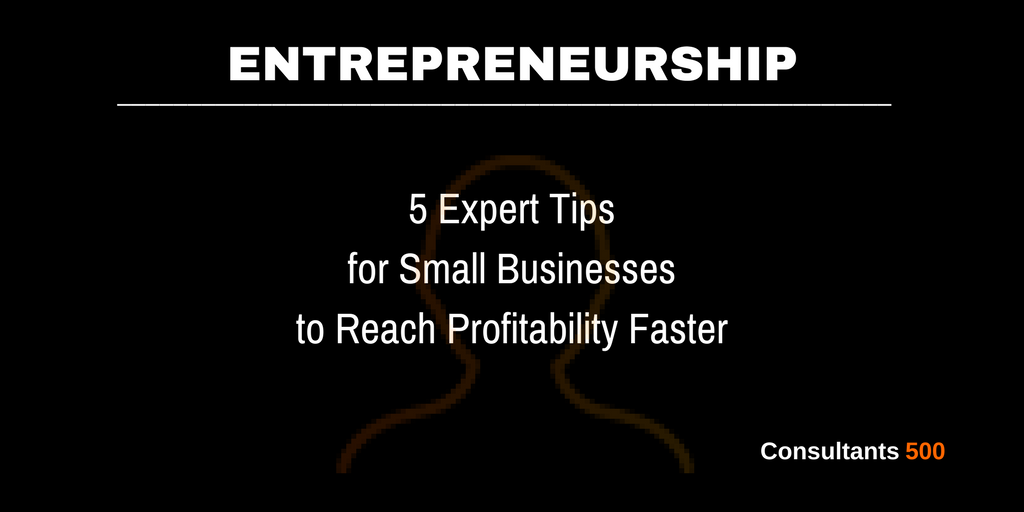
Creeping toward profitability may feel like waiting for lightning to strike, or the skies to part, or some other mysterious and uncontrollable meteorological event. Maybe it feels like a “someday” circumstance—one you can hope and plan for, but not work toward.
However, your profitability isn’t solely dependent on your customers or merchants or any of the other forces responsible for moving money into and out of your business’s bank account. You can take charge of reaching profitability faster.
If you’re anxious to start turning a profit, these actionable strategies can get your business there faster.
What We Mean When We Talk About Profitability
Remember that “profitability” does not mean the same thing as “positive cash flow.” Moving more of your own money into your business’s bank account creates positive cash flow, but not profit. This is also true of taking out loans: That loan becomes part of your cash flow, but the boost to your account balance doesn’t mean you’ve profited.
When we talk about profitability, we mean the difference between what your business earns and what it spends. This figure, your gross profit, equals your total revenue minus your business costs. Revenue is anything you earn from selling your goods or services.
Costs refer to any expenses associated with selling those goods or services. The two cornerstones of reaching profitability faster are decreasing your costs and increasing your revenue.
1. Raise Your Prices
Provided you maintain your usual number of sales, raising your prices is the most direct way to increase your revenue. Raising prices isn’t as simple as slapping a new price tag on your products and services, however.
Look to competitors in your industry, and investigate if and how they’ve also raised prices recently. (This may also be useful information to have when making your case to your customers.) Calculate how much losing a customer might cost you. Arm yourself with as much information as possible before settling on a price increase.
Once you settle on your new pricing structure, create a plan for announcing it to your customers. Build a strategy for communicating the change. Offer them time to take advantage of the old pricing before the new pricing takes effect.
Be transparent and specific when explaining the price increase. Stand behind it. Script interactions with customer-facing employees and educate your team on the change, so that they can communicate confidently with any customer who expresses surprise or displeasure.
2. Diversify Your Offerings
Instead of (or perhaps in addition to) raising prices, consider diversifying your revenue streams adding a new product or service. Investigate which of your customers’ needs you aren’t yet meeting with your current offerings. Research what new customers you might reach with a new product or service. Diversifying your product offerings can increase the number of sales your business makes, and thus your revenue, bringing you closer to profitability.
3. Identify What’s Driving Profit Already
Explore what’s generating the most profit for your business right now. The Pareto principle may be useful here—the idea that 80 percent of your revenue comes from 20 percent of your efforts. Find out, if you don’t already know, what that vital 20 percent includes for your business. Is a specific best-selling product driving 80 percent of your profit? A particular marketing campaign? Engagement with a particularly loyal slice of your audience? Once you know what’s already driving profit, you can better allocate resources to keep those efforts thriving.
4. Change Your Credit Card Number
This strategy is so simple, it may feel like a “hack” for cutting small costs. Changing your business credit card number wipes out any recurring charges in one fell swoop, freeing you from the tedium of individually canceling those recurring payments your business has accumulated over the years. Update your card information with the businesses you know you use regularly, and let the rest fall away.
5. Stop Pinching Every Penny
As a thrifty entrepreneur, you may be hard-wired to equate “expenses” with “bad” and “profit” with “good.” Shake off this misconception, and understand that investing resources in your business is the only way it can grow.
Yes, trimming workspace luxuries, opting for cheaper software solutions, and being selective about employee benefits are all reasonable ways to cut costs. Certainly, throwing out inefficient and ineffective equipment, practices, subscriptions, and more are necessary steps to reining in expenses. However, investments in new personnel, employee training and education, and better software and tools can be potential boons to your business. Certain perks may have an enormous impact on those intangible, less quantifiable aspects of your business, like culture and morale. Don’t underestimate what these kinds of investments can do for your long-term profitability.
Keeping an eye on the future can be challenging when dealing with the more immediate, daily stressors of running a small business. However, profitability demands a big-picture, forward-thinking mentality. It’s the only way to turn those dreams of turning a profit into reality.
About the Author:
 Jared Hecht is the CEO of Fundera, an online marketplace for small business loans. Prior to Fundera, Jared co-founded GroupMe, a group messaging service that was acquired by Skype in August 2011, and subsequently acquired by Microsoft in October 2011. Jared currently serves on the Advisory Board of the Columbia University Entrepreneurship Organization and is an investor and advisor to startups such as Codecademy, SmartThings, and TransferWise.
Jared Hecht is the CEO of Fundera, an online marketplace for small business loans. Prior to Fundera, Jared co-founded GroupMe, a group messaging service that was acquired by Skype in August 2011, and subsequently acquired by Microsoft in October 2011. Jared currently serves on the Advisory Board of the Columbia University Entrepreneurship Organization and is an investor and advisor to startups such as Codecademy, SmartThings, and TransferWise.
Follow Us